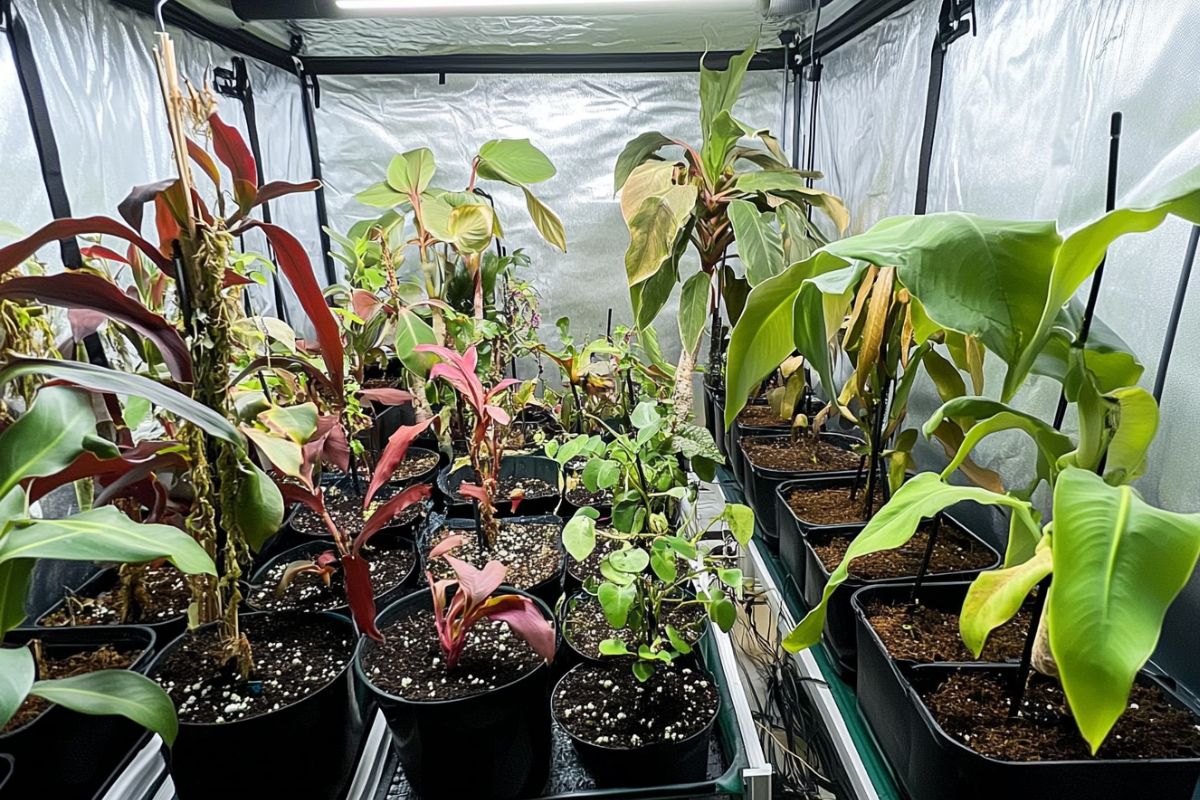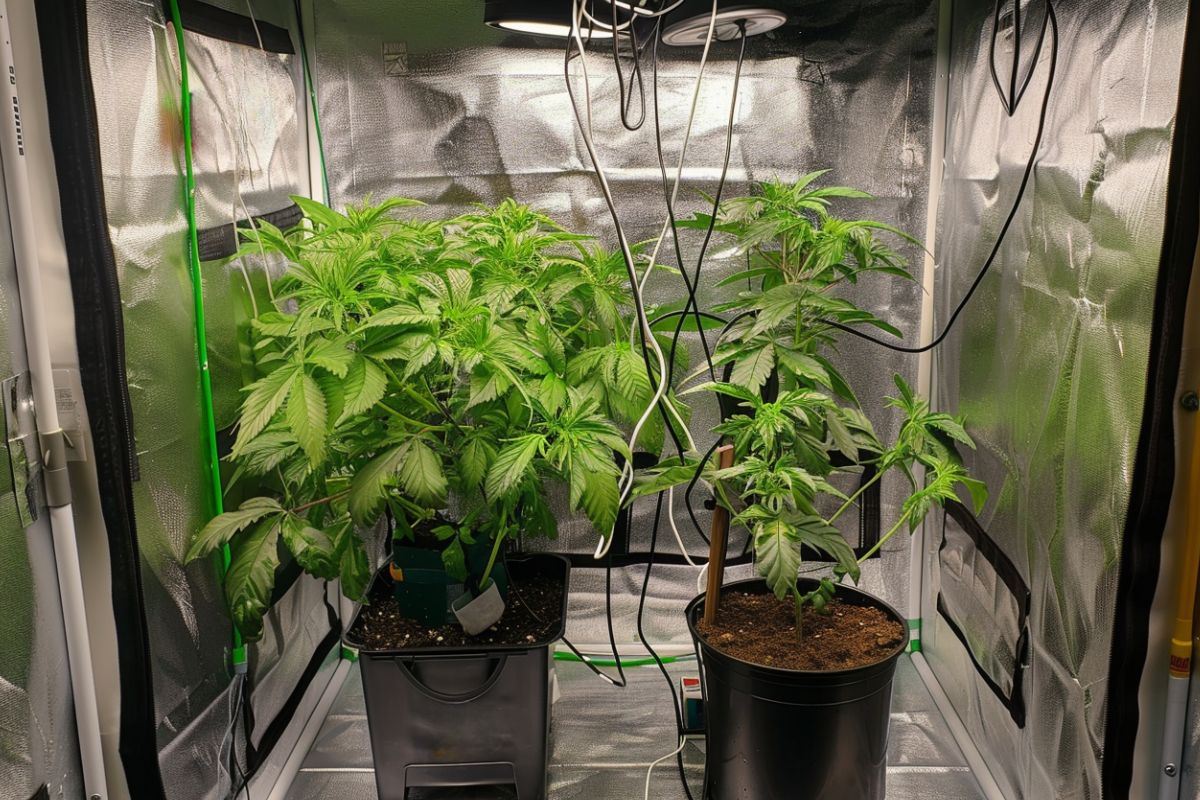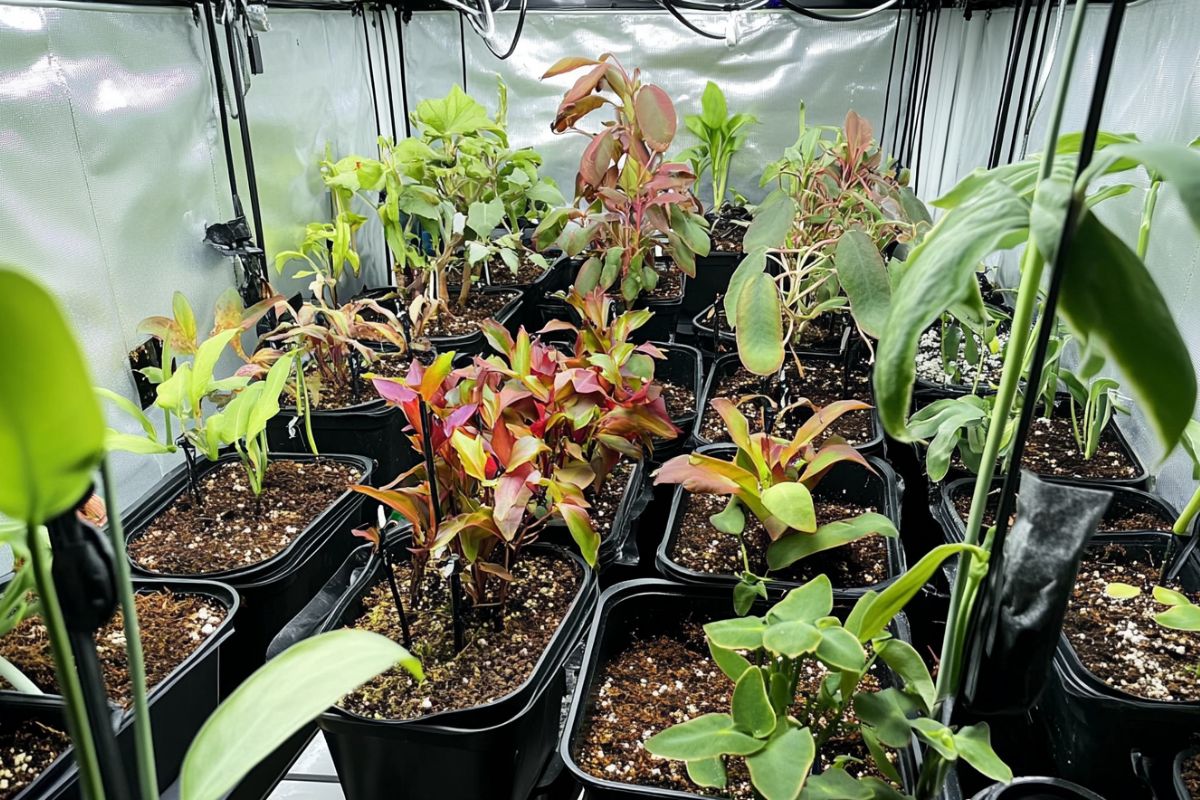How to cool a grow tent? This question comes up frequently. If you want to grow indoors, you’ll need a way to regulate the temperature inside your grow tent or your plants will suffer heat damage.
You can easily control the temperature inside your grow tent or grow room using fans or air conditioners. However, they can be expensive and require regular maintenance. There are also DIY methods to lower the temperature without spending much money.
This article will take a look at the best ways on how to cool a grow tent.
Why is the Grow Tent Hot?

The reason why the heat rises in a grow room is because of the ventilation system not working correctly. Ventilation systems should be checked before growing plants.
Too much heat could be a problem because it makes the air conditioner work harder than normal. The temperature inside the tent could get high if the temperature surrounding the grow tent are hot or the tent HVAC system isn’t working properly.
If you have too many heat sources, like grow lights, but not enough cooling systems to balance the temperature inside the grow tent, it could get too hot.
Now that we know these are the top reasons for why the grow tent is hot, let’s look at various ways to cool down a grow tent.
Top Ways to Cool a Grow Tent

1. Ensure Good Airflow through Ventilation Holes
Grow tents come with vents that allow air to flow through them. This helps to lower temperatures inside the tent and also allows for better ventilation. Ensuring proper airflow is important as well.
There are some things you can do to improve the air circulation in your grow room. You can relocate the fan position, and you can also adjust the speed.
You can also move the duct opening to an area where there’s cooler air. Then the cooler air can easily enter into the grow tent, providing a significant drop in the temperatures inside. Consider sealing the vents properly, if they are open.
2. Decrease Heat Sources Where Possible

The main heat sources inside a grow tent are grow lights, fans, and other electronics. These items produce heat when they’re turned on. If possible, you should try to decrease their usage.
Grow lights are used to warm up the soil and/or water inside the grow room. Air-cooled hoods are used to prevent additional heat created by the grow lights from entering the grow room.
Lights should be run during the night and kept off at night. One thing you can do is use timers to turn on the lights during the night. The cooler night air can help with keeping temperatures down, so the fans and air conditioners don’t need to work as hard.
Low-heat bulbs will also help to save energy.
You should use the same approach when using heat pumps. You need to make sure that your heat pump doesn’t produce too much heat. Otherwise, you could get into trouble.
3. Keep the Ducting Easy
Overly done ducting causes poor air flow and higher temperatures. The fans will need to work much harder, resulting in additional heat too.
You should always be careful about how much ducting you use. Too much ducting can cause problems. You can decrease the amount of ducting you use by looking for more efficient paths.
The more twists and turns that the ducting makes, the less efficient the air flow is. That means the fans will be working harder, heating the fan motors more.
Here’s an easy calculation, the fans work 5% more for every 90 degrees the duct turns. Keep the ducting paths as straight as you can.
Also, make sure that you’re using the right kind of ducting materials. Bad materials will only add to the problem and lead to efficiencies.
4. Use a Mini Air Conditioner
Air conditioning is a must when growing indoors. It keeps the temperature down and helps plants grow faster.
There are 2 main types of AC units: Mini AC and Split AC.
Mini ACs are the best option for indoor growers for their portability. These are less powerful, but not as expensive and can be moved around.
Split air conditioners are more efficient and powerful than mini ones, but they are also more expensive. They’re also not portable and are installed on the wall, so not as convenient. If you have a large grow room, a split AC is the better option.
5. Avoid Low Humidity in the Grow Tent
Think about what we do when it’s hot outside. Spraying and misting with water helps us cool down. When we spray, the humidity level is higher, but it’s cooler.
The same situation occurs with humidity levels in a grow tent. When the humidity levels are higher, the temperatures are lower. Conversely, when the humidity levels are low, the temperatures are higher.
That also doesn’t mean you keep the humidity at 80% humidity either. It depends on what houseplants you’re growing and what humidity levels they do well in.
For example, if you’re growing plants that are native to tropical areas, then they require higher humidity levels around 60% usually.
Look for the top humidifiers for grow tents and grow rooms.
6. Move the Grow Tent to a Cooler Area
Grow tents should be kept away from the heating system and windows with lots of direct sunlight and heat, usually south-facing windows.
As the exterior of the grow tent gets hotter, the interior will too, potentially harming your plants.
If possible, move the grow tent to a cooler area. This way, you won’t have to worry about the high temperatures affecting your plants’ growth.
7. Use Fans in the Grow Tent
Fans help circulate the air in any space and great for cooling down a grow tent. There are two different kinds of fans: Inline fans and Oscillating fans.
Inline fans are ones that are installed in the ducting, so it brings in air (air intake) and takes air out (air exhaust.
Oscillating fans are ones that can stand on the floor or attached to the grow tent/room against the wall. They will circulate the air inside the grow tent.
Be sure to find the best size and most effective fan for your grow tent. You want to make sure that you have enough air circulation in your grow tent. You don’t want to end up with moldy plants because of poor air circulation.
Place your fans smartly too, so they’re circulating fresh, cool air and not the old, hot inside.
Find the right size of both types of fans. Place them smartly. Locate the fans. Place them in the correct location.
Popular inline fans:
Popular oscillating fans:
8. Use Water Chillers
Water chillers are useful and inexpensive for keeping your grow room cool. The water chiller uses cold water to cool down the grow room.
It works by using an evaporator coil to absorb heat and moisture from the air. Then, the chilled water is pumped into the grow room where the plant roots are located. It’s important to use a good quality water chiller. If you’re going cheap, chances are you’re going to get a bad one.
Theere are 2 main types: air cooled chillers and water cooled chillers.
Air cooled chillers are less effective for large grow tents.
Water-based chillers are recommended because they provide a humid environment. This keeps the grow tent cold and also helps prevent mold growth.
9. Control the Climate
Heat control of a grow tent can be done by controlling the climate and environment using a variety of equipment. This includes things like lights, fans, air conditioners, humidifiers, dehumidifiers, etc.
To control these devices and working together. The better you’re able to control the grow tent environment, the more health benefits your plants receive.
Controllers are available in different forms in the market. Solo controllers are recommended for indoor gardening. There are also 360-degree environmental controllers for indoor gardening. This is a list of our suggested products from both of the categories.
10. Smart Pots
Smart pots are very useful for keeping plants cooler during hot summer days. They also help plants to grow better because they provide aeration and oxygen from the sides.
These smart pots are made of a soft fbaric that is able to still hold it’s shape. This makes the pot much cooler than if the plant pot isn’t breathable. Excess heat is also able to escape.
11. Lower the Number of Plants
A crowded tent is never ideal. There should be a maximum number of plants inside a tent. When there are too many plants, the tent gets very hot because there’s less air flow.
This means that you need to lower the amount of plants inside a tent and increase ventilation. You may have to sacrifice some plants, but you will save money and time.
If you want to grow more plants, getting another grow tent is better than hurting the plants you’re currently growing.
12. Install A Light Mover
The immediate area around grow lights are always hotter than areas further from the lights. Using a motorized light mover moves the lights around the grow tent or room.
This helps for more evenly distributed light across your plants. This also reduces the chances of burning leaves.
13. Use Air Cooled Lights
Air-cooled lights and reflectors are great for cooling down the hot air from the light bulbs in a grow tent. They work by circulating the hot air through the ducting.
They help to save energy by passing the hot air out of the room. They are connected to the ducts to avoid allowing the heat to stay in the grow tent.
14. Keep Plants Healthy with Nutrients
Plants require nutrients to grow properly. Make sure you feed your plants regularly with the right nutrients. The healthier that plants are, the less toxic the environment will be. It’s not a direct solution to lowering heat, but it will keep your plants healthy.
You can use liquid nutrients or dry nutrients. Liquid nutrients are usually easier to handle. Dry nutrients are more concentrated and can be more effective as they’re slow-release.
15. Ice Bucket
An ice bucket is an excellent way to cool off a grow tent and the cheapest, if you already have a large freezer. Fill up the bucket with water and place it near the fan. The cold water will create condensation which will then fall back into the bucket.
It works best when placed under the fans, but you can also put it anywhere in the tent.
One thing you’ll need is a freezer. If you have a chest freezer, it’ll be the easiest way to get a bucket of ice. Fill a bucket up with water and put it in the chest freezer. One of the smaller upright freezers will also work depending on the size of your bucket.
Otherwise, you fill a bucket with ice cubes from the smaller freezers in your refrigerator. This is much more work and it’s harder to fill up a bucket with small ice cubes. What you can do is add cold water to a bucket. This will have similar results as if the bucket was all ice.
Cool a Grow Tent Final Thoughts
All in all, keeping a grow tent cool isn’t hard. There are many ways to avoid high temperatures and make your grow space more comfortable for your plants.
There are different options available to you, so choose what’s most convenient for your situation.
Other articles that might interest you:





























